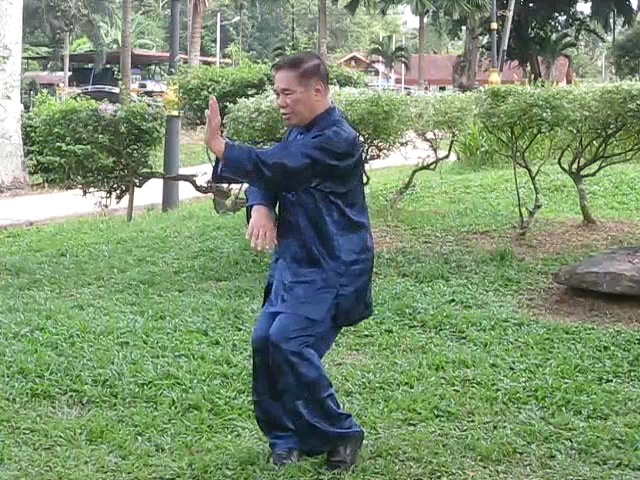HISTORY AND PHILOSOPHY OF
WU YU XIANG STYLE TAIJIQUAN
There are two Wu Styles Taijiquan, one from the lineage of Wu Yu Xiang and the other from the lineage of Wu Chian You. In Chinese characters, the two Wu are written differently and pronounced in different tones though the sounds are the same in Mandarin. In Cantonese the sounds are different, and are pronounced as "mo" and "ng" respectively.
Wu Yu Xiang first learned from Yang Lu Chan, who later recommended Wu Yu Xiang to learn from Chen Qing Ping, whose Chen Style Taijiquan was sometimes called Zhaobao Taijiquan because Chen Qing Ping later moved from the Chen Village to Zhaobao Village. Wu Yu Xiang, who came from a wealthy scholar;y family, combined the Taijiquan of Yang Lu Chan with the Taijiquan of Chen Qing Ping to formulate his Wu Style Taijiquan in the 19th century.
As Wu Yu Xiang was wealthy, he was not keen to teach Taijiquan, The spread of Wu Style Taijiuan was carried out by a third-generation master, Hao Wei Zhen, in the early 20th century. Hence, Wu Style Taijiquan is sometimes called Hao Style Taijiquan.
Personally I find three patterns in the Wu Yu Xiang Taijiquan Set most interesting, namely "Palm Strike to Face", "Blue Dragon Emerges from Water", and "Continuous Cannon".
"Palm Strike to Face" is a close-body attack, and it requires much internal force. Its footwork reminds me of the "half-step" of Xingyiquan, which I call the "drag-step" for the convenience of Western readers. Wu Yu Xiang Style and Sun Style make excellent use of this Xingyiquan influence, which is effective for combat for the initiated, but meaningless to the naive.
"Blue Dragon Emerges from Water" is an excellent pattern to manifest internal force. I first found this pattern in Chen Style Taijiquan, and later it contributed much to my development of dragon force. It suggested a link to Zhang San Feng, probably via the great Taijiquan master, Wang Zhong Yue. From classical sources, it was likely that both Zhang San Feng and Wang Zhong Yue used dragon force, which is quite different from the snake form seen in Taijiquan practiced by most practitioners today.
The two patterns, "Cannon to Sky" and "Continuous Cannon", are also found in Wudang Taijiquan, which was called Wudang Shaolin Kungfu in the past. It suggested a link to the Cannon Fist of early Shaolin Kungfu. The great Shaolin monk, Jue Yuan, who helped Li Shi Ming to establish the Tang Dynasty and declined the award of "Great General", gave a demonstration of Cannon Fist at an imperial reception. Much later, Chen Style Taijiquan was reputed to be based on Cannon Fist.
Wong Kiew Kit
8th January 2016
Wu Yu Xiang Style Taijiquan in Pictures
LINKS
Courses and Classes

